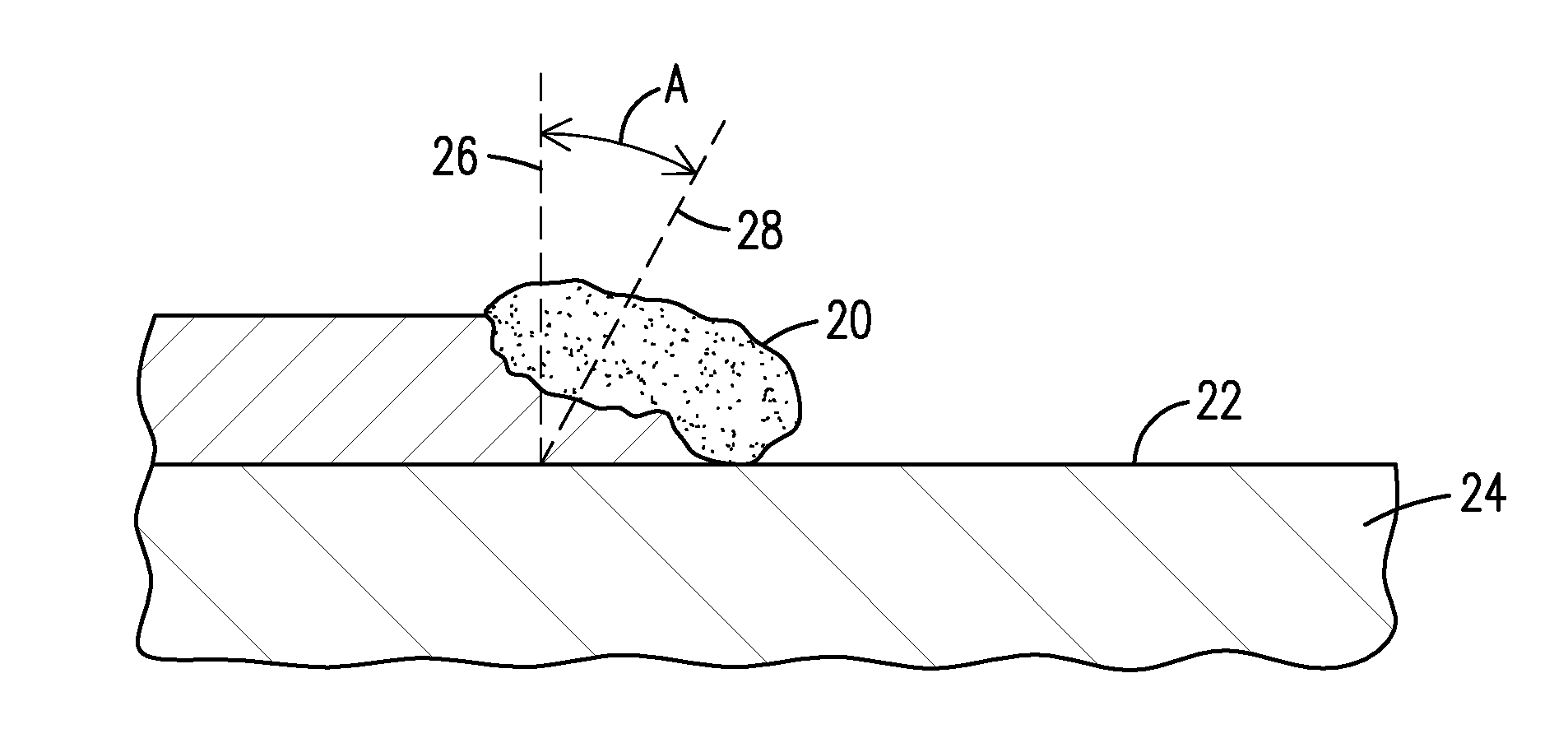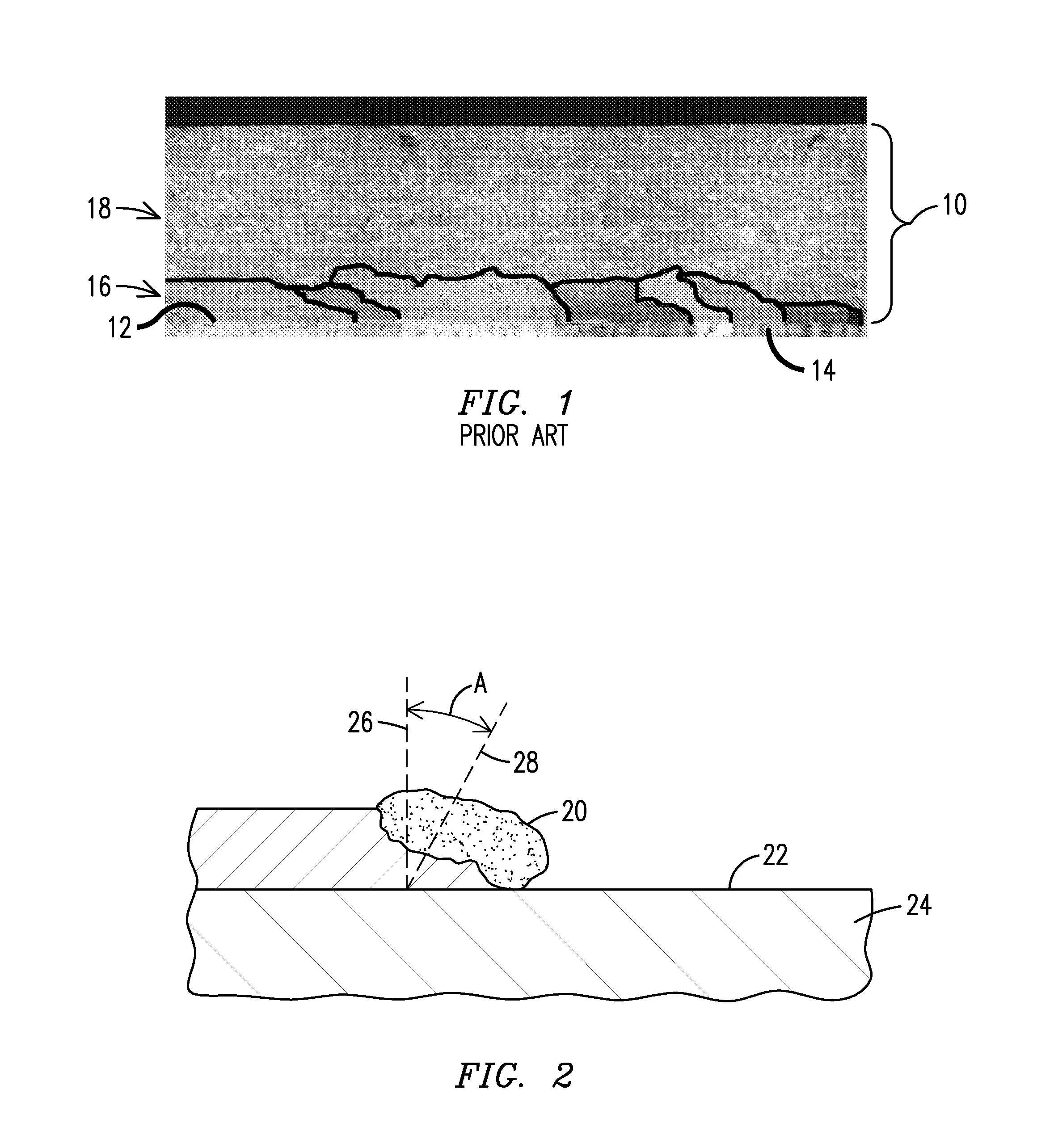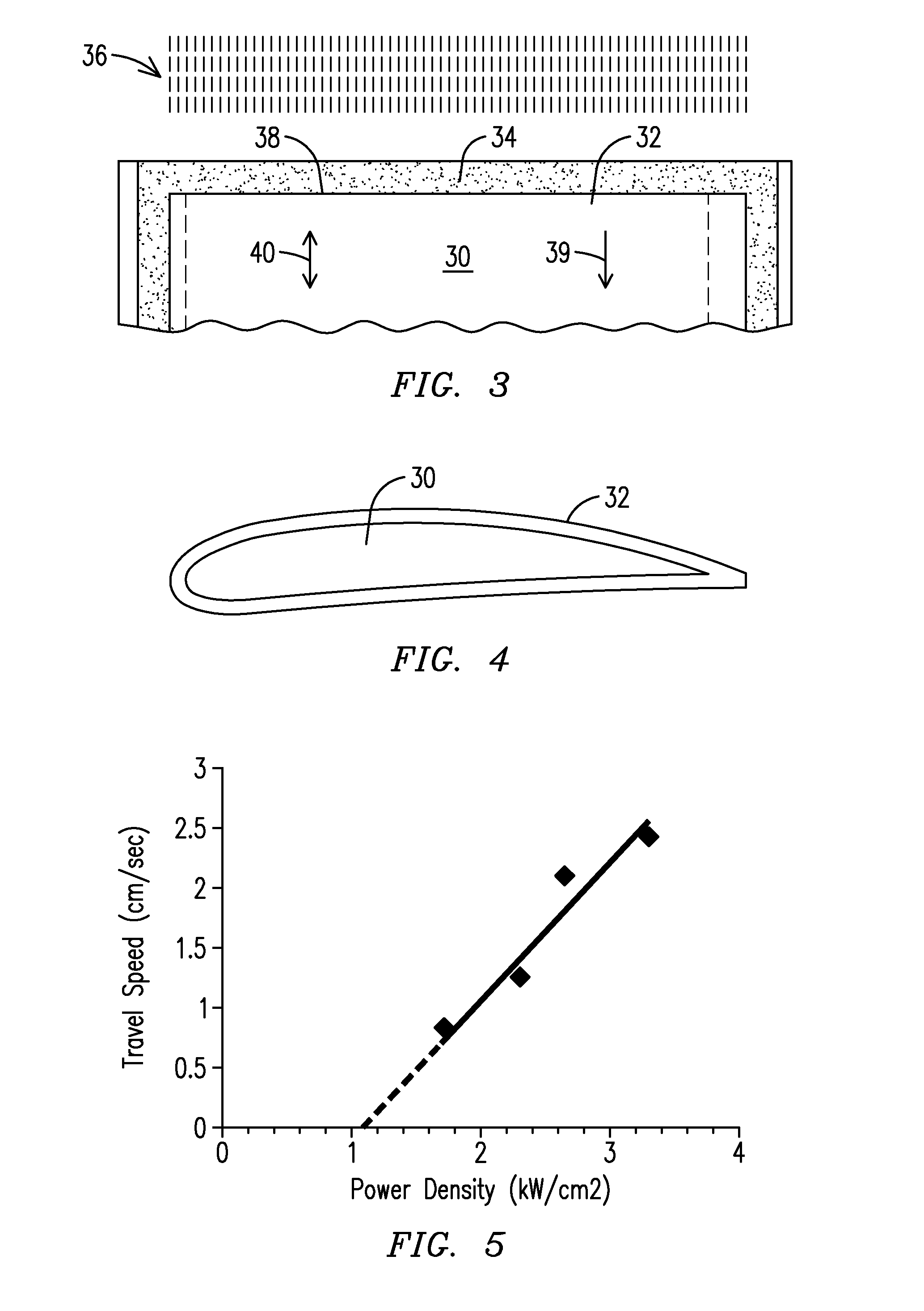Repair of directionally solidified alloys
a technology of directionally solidified alloys and alloys, applied in the field of materials, can solve the problems of weakening components, limited local repairs, and difficult repair of such materials
- Summary
- Abstract
- Description
- Claims
- Application Information
AI Technical Summary
Benefits of technology
Problems solved by technology
Method used
Image
Examples
Embodiment Construction
[0014]FIG. 1 is a photomicrograph illustrating the result of a typical prior art weld cladding repair, showing a multi-layer clad region 10 deposited over a surface 12 of a directionally solidified substrate material 14. In a lowermost portion 16 of the clad region 10, directionally solidified extensions of the substrate grains are highlighted in the figure with black lines. However, those grains terminate after a few layers of cladding and are covered by an uppermost portion 18 of the clad region 10 wherein recrystallization has occurred and the grains are no longer directionally solidified. The present inventor has recognized that this is the result of the local direction of process solidification achieved during the clad layering process. FIG. 2 is a schematic illustration explaining how this occurs.
[0015]FIG. 2 shows a profile view of a melt pool 20 of clad material progressing along a surface 22 of a directionally solidified substrate 24. The grains of the substrate 24 extend i...
PUM
| Property | Measurement | Unit |
|---|---|---|
| Thickness | aaaaa | aaaaa |
| Microstructure | aaaaa | aaaaa |
| Energy | aaaaa | aaaaa |
Abstract
Description
Claims
Application Information
 Login to View More
Login to View More - R&D
- Intellectual Property
- Life Sciences
- Materials
- Tech Scout
- Unparalleled Data Quality
- Higher Quality Content
- 60% Fewer Hallucinations
Browse by: Latest US Patents, China's latest patents, Technical Efficacy Thesaurus, Application Domain, Technology Topic, Popular Technical Reports.
© 2025 PatSnap. All rights reserved.Legal|Privacy policy|Modern Slavery Act Transparency Statement|Sitemap|About US| Contact US: help@patsnap.com



